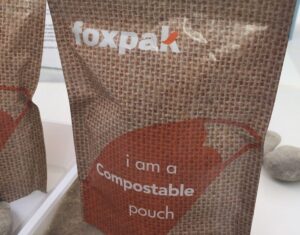
Recent surveys conducted by France-based social community for pet lovers Yummypets indicated that more than 60% of pet owners in five countries indicated their willingness to pay more for environmentally friendly packaging for pet food products.
Packaging professionals from around the globe reported significant challenges in creating more eco-friendly packaging materials and processes for sale on the market, with 71% reporting quality control processes being more difficult than before when dealing with sustainable materials (based on research conducted by Industrial Physics), an international product testing and inspection company.
Undoubtedly, the difficulties inherent to producing sustainable packaging contribute significantly to their increased costs; creating tension among some consumers who resent paying more than necessary for such packages.
Are pet owners really willing to pay more?
The Yummypets survey involved over 1,500 pet owners from Belgium, Canada, France, U.K. and U.S. The results were reported by David Palacios Rubio of GlobalPets magazine; 30% responded that they would definitely or probably pay more for more eco-friendly packaging of pet foods while 33.2% thought about doing so; 24.3% expressed uncertainty; 9.4% gave probable responses while 2.9% replied with absolute no.
Rubio broke down the results by country: 37.8% of British and 37.3% of French owners showed “strongest willingness” to purchase pet products with paper or recyclable packaging, she wrote. Americans and Belgians followed at 34.9% and 33.2%, respectively (no data for Canada was given; likely results are lower).
As background, it should be noted that an overwhelming majority of pet owners from five countries, 82.2% across all, feel it’s essential for pet products manufactured by an environmentally friendly company to be manufactured; yet their willingness to pay extra does not match up. Furthermore, the survey also asked about sustainably produced products; only French pet owners (37.3%) seemed as open-minded in paying extra than for packaging sustainability alone.
Rubio did not report separate results for Canada or Belgium, however.) The levels for sustainable production began declining: 35.4% among British owners versus 24% among U.S. owners (Rubio did not publish separate figures for Belgium or Canada).
Rubio suggested the disconnect could stem from this: 41.7 of respondents reported they are skeptical of pet food companies’ sustainability claims; 29.6 trusted them instead. French (48.5%) and American (43.3%) pet owners appear most skeptical.
Packaging suppliers also feel their pain; pet owners express skepticism regarding multiple aspects of sustainability in pet foods, not only packaging. Concerns may stem in part from confusion among consumers when confronted with various recyclable and sustainable claims and symbols on products from all categories (not just pet food), including human food products.
“While sustainability has become more mainstream, consumers can be easily misled by claims on packaging related to formulation and recycling,” according to Haley Randolph of Ubuntoo – an innovative platform connecting innovators and professionals aiming for sustainable economic development – quoted in an article written by Petfood Industry Editor Lindsay Beaton. An increase in lawsuits filed against companies making dubious recycling claims is evidence that consumers are paying attention and don’t wish to be mislead by false promises; consumers want packaging that’s both technically recyclable as well as feasibly recyclable,” Randolph concluded in his article in Petfood Industry by Editor Lindsay Beaton’s article by Editor Lindsay Beaton’s editorship of Petfood Industry Editor Lindsay Beaton’s article by Editor Lindsay Beaton.
Just adding in the difficulty of developing more sustainable packaging materials makes things even harder for pet owners and pet food brands alike. According to an Industrial Physics survey, 66% of respondents identified cost as their main obstacle in creating more eco-friendly packaging; 49% noted testing standards as their top concern – both issues which become even more pressing with increasing costs exacerbated quality control concerns.
“Global supply obstacles created by the pandemic made sourcing more challenging, while legacy issues often necessitate multiple providers instead of one trusted supplier,” according to Industrial Physics in their release regarding their report. This necessitates additional quality control processes as well as packaging integrity testing services to be put in place and monitored effectively.
Survey respondents also highlighted optimizing packaging material performance to protect products (53%), and passing additional costs onto consumers (50%), as challenges.
Sustainable Packaging Solutions in Sight
One of the main issues surrounding sustainable packaging for consumers, manufacturers and suppliers alike stems from its being such a new field, with continually emerging technologies and solutions. However, research and projects are growing in order to develop technologies, recycling practices and programs, consumer education initiatives like Pet Sustainability Coalition’s Forward Flex Project that increases recycling of packaging. In pet food circles alone this project has proven its worth; see it for example here in terms of increasing recycling of packaging with their pledge initiative!
Industrial Physics research revealed packaging professionals’ belief that new standards (52.5%) and legislation or regulations (41.6%) will have the greatest influence on sustainable packaging innovation within five years.




